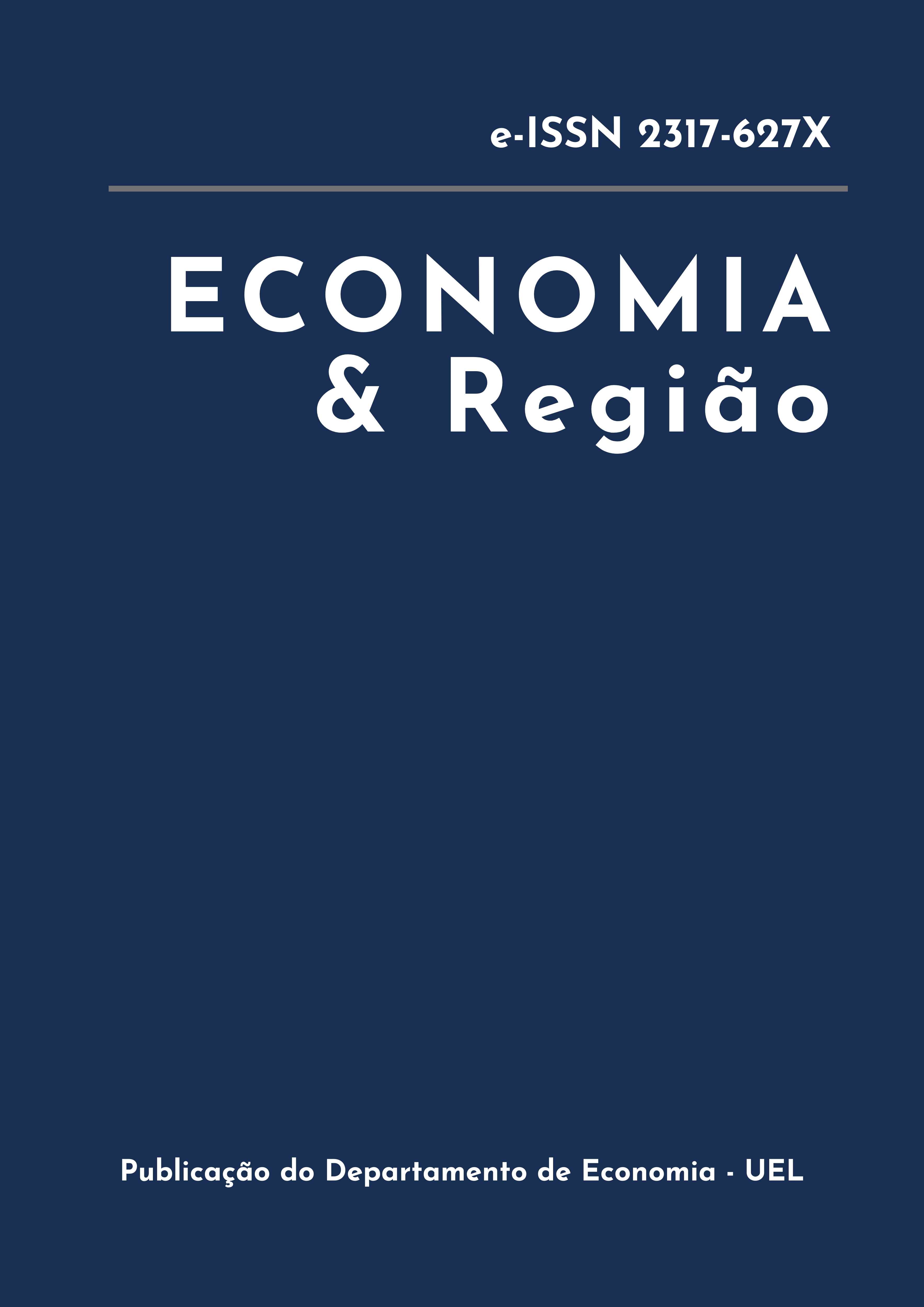mpacts of minimum wage policy and formal labor taxation on family well-being and decisions
investing in education, physical capital or leisure?
DOI:
https://doi.org/10.5433/2317-627X.2024.v12.n2.48430Keywords:
Fiscal policy, general equilibrium computable model, minimum wageAbstract
This paper presents an approach of the interaction between fiscal policy and unemployment through a stochastic general equilibrium model (DSGE), which mainly analyzes the effects of labor tax policies on unemployment. The model allows us to consider formal and informal labor markets, to evaluate the qualification award in Brazil, and it corroborates the idea that the Brazilian formal labor market is strongly explained by its own rigidity rather than by economic dynamics. The theoretical model was calibrated for the Brazilian economy and using a partial equilibrium analysis, the results showed the tradeoff between investment in capital and education, leisure and labor supply in the formal and informal sector of the families.
Downloads
References
AIYAGARI, S. Rao. Uninsured idiosyncratic risk and aggregate saving. The Quarterly Journal of Economics, v. 109, n. 3, p. 659-684, 1994.
ALEXOPOULOS, Joanna. Three essays on inequality. 2012. Tese de Doutorado. University of Illinois at Urbana-Champaign.
ANTUNES, António; CAVALCANTI, Tiago; GUIMARAES, Juliana. Less Inequality, More Welfare? A Structural Quantitative Analysis for Brazil. Rede de Economia Aplicada. 2017.
BATTAGLINI, Marco; COATE, Stephen. Fiscal policy and unemployment. National Bureau of Economic Research, 2011.
BRASIL. Ministério do Trabalho e Emprego. Leis Complementares e Simples Nacional. Disponível em < http://trabalho.gov.br/portal-mte/> e <https://www.planalto.gov.br/ccivil_03/leis/LCP/Lcp155.htm> Acesso em abril/2018.
BRASIL. Ministério da Educação e Cultura. Custos de educação. Disponível em <http://portal.mec.gov.br/busca-geral/214-noticias/296700251/11481-sp-515174875> Acesso em julho/2018.
BRESSER-PEREIRA, Luiz C. (2004) "Macroeconomia Pós-Plano Real: as relações básicas". In: João Sicsú, Luiz Fernando de Paula e Renaut Michel, orgs., Novo Desenvolvimentismo: Um Projeto Nacional de Crescimento com Equidade Social. Barueri: Manole; Rio de Janeiro: Fundação Konrad Adenauer: 3-47.
CASS, David. Optimum growth in an aggregative model of capital accumulation. The Review of economic studies, v. 32, n. 3, p. 233-240, 1965.
ELLERY JR, Roberto; GOMES, Victor; SACHSIDA, Adolfo. Business cycle fluctuations in Brazil. Revista Brasileira de Economia, v. 56, n. 2, p. 269-308, 2002.
FLORI, P. M. Desemprego de Jovens: um estudo sobre a dinâmica do mercado de trabalho juvenil brasileiro. Dissertação (Mestrado em Economia) - Faculdade de Economia, Administração e Contabilidade da USP, São Paulo, 2003.
GREMAUD, Amaury Patrick; VASCONCELLOS, Marco Antonio Sandoval de; TONETO JUNIOR, Rudinei. Economia Brasileira Contemporânea. 7. Ed. São Paulo: Atlas, 2009.
HANSEN, Gary D. Indivisible labor and the business cycle. Journal of monetary Economics, v. 16, n. 3, p. 309-327, 1985.
KOOPMANS, Tjalling C. et al. On the concept of optimal economic growth. 1965.
KRUSELL, P.; OHANIAN, L. E.; RÍOSâ€RULL, J. V.; VIOLANTE, G. L. Capitalâ€skill complementarity and inequality: A macroeconomic analysis. Econometrica, v. 68, n. 5, p. 1029-1053, 2000.
KUZNETS, Simon. Economic growth and income inequality. The American economic review, p. 1-28, 1955.
KYDLAND, Finn E.; PRESCOTT, Edward C. Time to build and aggregate fluctuations. Econometrica: Journal of the Econometric Society, p. 1345-1370, 1982.
LUCAS JR, Robert E. Econometric policy evaluation: A critique. In: Carnegie-Rochester conference series on public policy. North-Holland, 1976. p. 19-46.
LUCAS, Robert E. Understanding business cycles. In: Carnegie-Rochester Conference Series on Public Policy. Volume 5, 1977, p. 7-29.
MUKOYAMA, Toshihiko; ÅžAHIN, AyÅŸegül. Why did the average duration of unemployment becomes much longer?. Journal of Monetary Economics, v. 56, n. 2, p. 200-209, 2009.
PRONI, M. Teorias do desemprego. TD, Brasília, n.256, 2015.
RAMSEY, Frank Plumpton. A mathematical theory of saving. The economic journal, v. 38, n. 152, p. 543-559, 1928.
TAUCHEN, George. Finite state markov-chain approximations to univariate and vector autoregressions. Economics Letters, v. 20, n. 2, p. 177-181, 1986.
Downloads
Published
How to Cite
Issue
Section
License
Copyright (c) 2024 ELIANARA GOMES DOS SANTOS, Joanna Georgios Alexopoulos

This work is licensed under a Creative Commons Attribution 4.0 International License.
Economia & Região adota a Licença Creative Commons Attribution CC-BY 4.0 International, portanto, os direitos autorais relativos aos artigos publicados são do(s) autor(es), que cedem à Revista Economia & Região o direito de exclusividade de primeira publicação.
Sob essa licença é possível: Compartilhar - copiar e redistribuir o material em qualquer suporte ou formato. Adaptar - remixar, transformar, e criar a partir do material, atribuindo o devido crédito e prover um link para a licença e indicar se mudanças foram feitas.




















